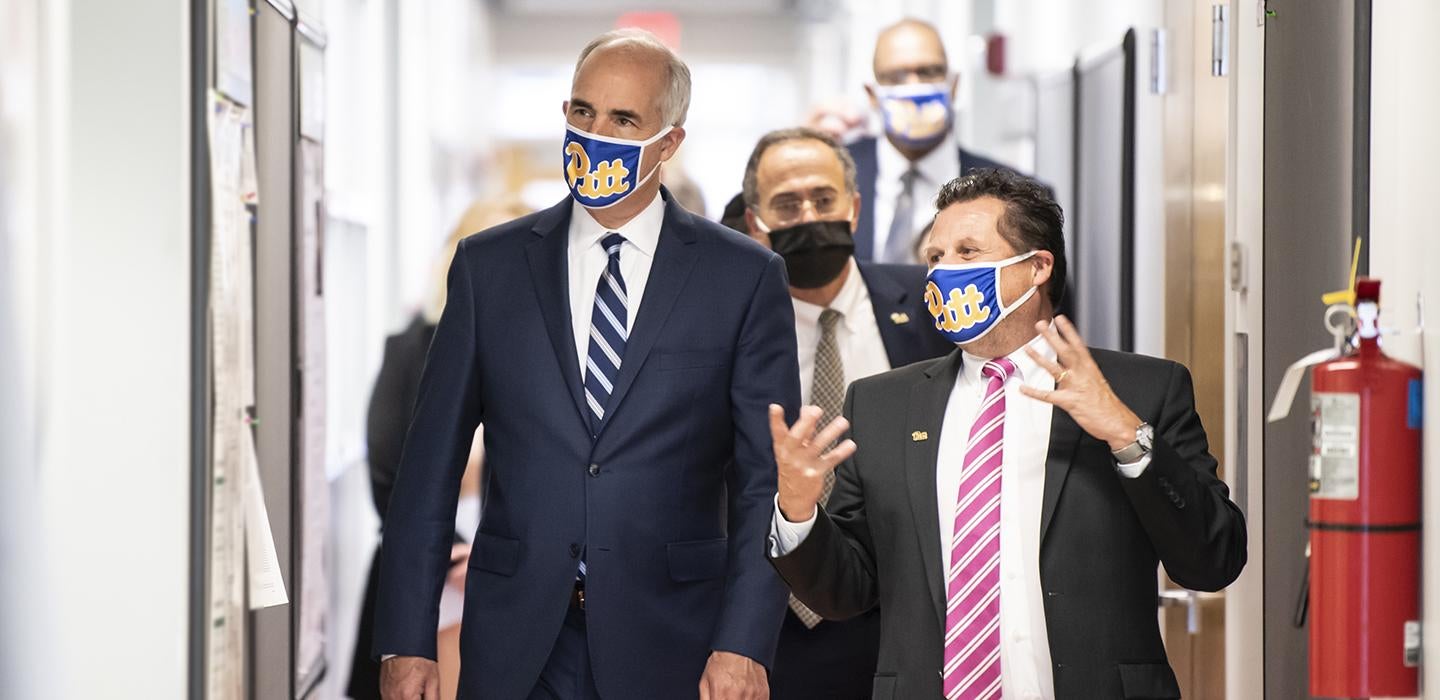
Subscribe to Pittwire Today
Get the most interesting and important stories from the University of Pittsburgh.Sen. Bob Casey visited Pitt’s Center for Vaccine Research (CVR) Friday morning to learn about what it takes to be prepared for a pandemic. COVID-19 surely isn’t over, but Congress is already thinking ahead about to how to prevent the next emerging infectious disease.
“Pennsylvania and the nation need dedicated researchers like Dr. Duprex and his team at the Center for Vaccine Research,” Casey said. “I am working every day to ensure that we are better prepared for the next public health threat, including through federal funding to support the Regional Biocontainment Laboratories that are a crucial part of our public health infrastructure.”
Regional Biocontainment Laboratories (RBLs), such as the one within CVR, act as a hub for bringing together scientific expertise to handle, evaluate and safely study highly infectious agents. Staff working in Pitt’s RBL have high-level clearance, access to competitive capabilities and run thriving, internationally competitive research programs. (Get an inside look with the documentary, “Chasing COVID.”)
Duprex, director of the CVR and the Jonas Salk Chair for Vaccine Research at Pitt, and his team have been busy of late, with a visit from Secretary of State Antony Blinken earlier this month. However, such tours are both welcome and enjoyable work.
“It’s hard to get across what we do sometimes,” said Natasha Tilston-Lunel, a postdoctoral associate who followed Duprex to Pitt from Boston in 2016. “Having visibility for this work is so important.”
To that end, Tilston-Lunel gave Casey a peek into the microscope as part of the Oct. 22 tour. She explained that the cells he was looking had been infected with SARS-CoV-2: the green spots were the spike protein, the blue was the cell nucleus where genetic information is stored and the red was the support structures of the cell.
The senator also met with JoAnne Flynn, a professor of microbiology and molecular genetics, who explained how Duprex helped bring a wide community of researchers together in Pittsburgh under one roof.
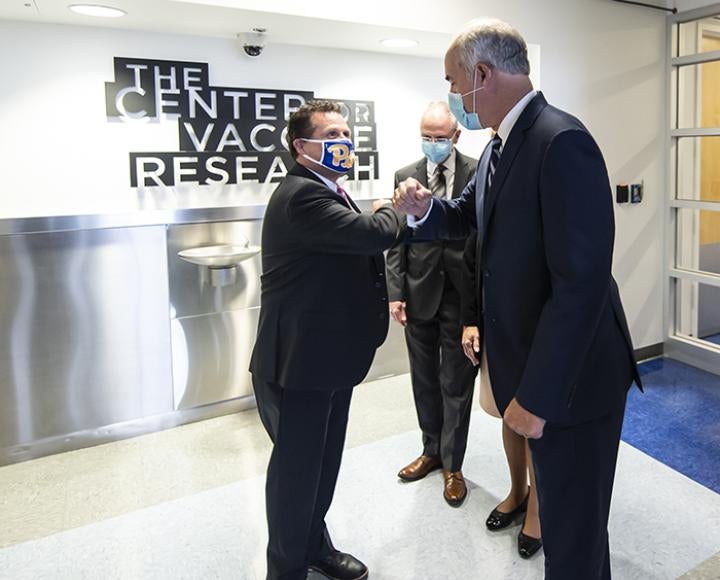
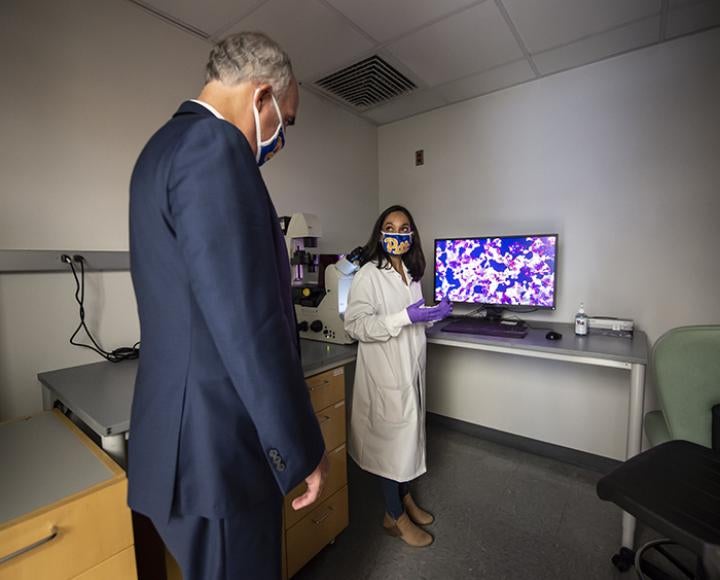
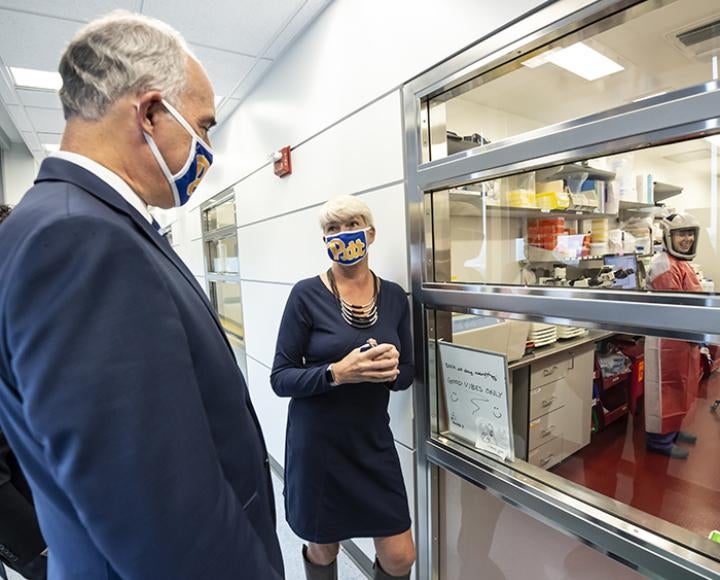
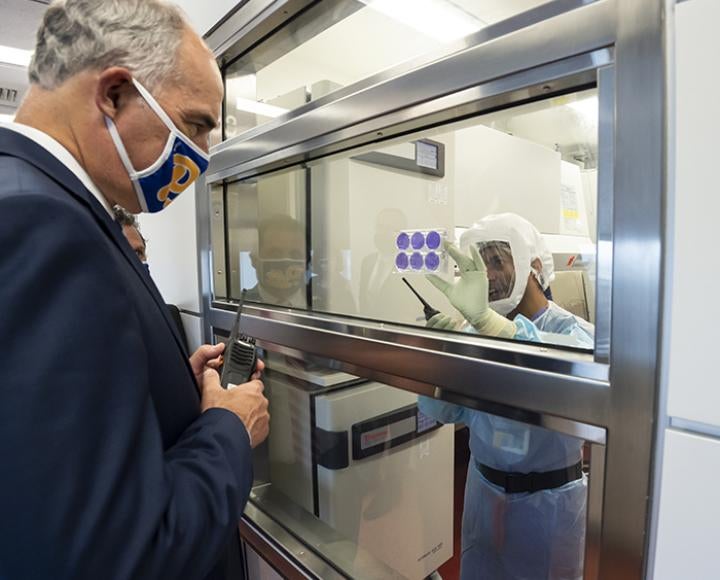
Flynn researches tuberculosis (TB), a bacterium that causes high death rates in lower socioeconomic groups. Bacteria and viruses are different, but TB transmits through aerosols, so the state-of-the-art imaging technology at CVR, as well as the opportunities for collaboration that exist within Pitt’s flagship high-tech biomedical research facility, mean the cutting-edge is sharper here for everyone — more than almost anywhere else in the world.
“This is what Pitt’s really good at,” said Duprex. “Community and communities matter here.”
“Viruses don’t observe boundaries on a map. A disease here is a disease everywhere. That’s why CVR cannot be a one-trick pony only focusing on viruses. That’s why all the collaboration between our labs, the diversity of expertise here, is necessary,” he added.
For Tilston-Lunel, the senator’s tour was encouraging. Bunyaviruses, the animal- and insect-borne RNA viruses that she studies, are “a group of viruses we need to watch out for,” she said, especially with global warming. Virologists worry that these viruses will spread farther and faster due to climate change because places previously too cold for insects to live or thrive are now becoming more habitable.
Toward the end of the tour, the senator remarked on how much he’d learned in such a short timeframe. He even asked for a second look into the microscope.
Of having a facility like CVR in the region, Casey said “There’s no way to place a value on it. It’s astronomical when you consider what it means for this entire region of the commonwealth.”
Casey has had infectious diseases on his radar for a long time. He led the passage of the reauthorized Pandemic All-Hazards Preparedness Act in 2013 with bipartisan support. Enacted in 2006, the updated legislation strengthened the nation’s preparedness to respond to medical and public health emergencies.
“We’re pretty blessed that we’ve got so much talent and the benefit of so much research here. I’m not at all surprised that Pitt has a global impact. So, if anything, we should brag about it more,” Casey said.
Scientists who also met the senator during his CVR tour included Postdoctoral Associate Maria Alcorn, Researcher Holly Simmons, Postdoctoral Associate Caleb Swaim, Research Assistant Professor Linda Murphy, Associate Professor of Immunology Doug Reed and Research Scientist Sham Nambulli.
— Micaela Corn


